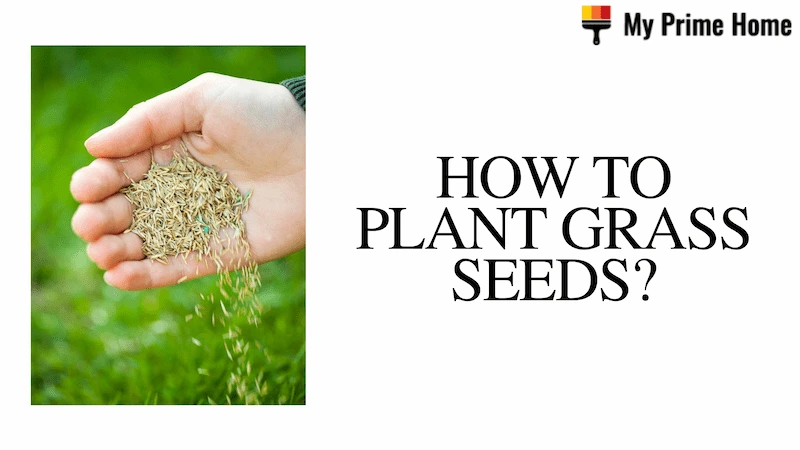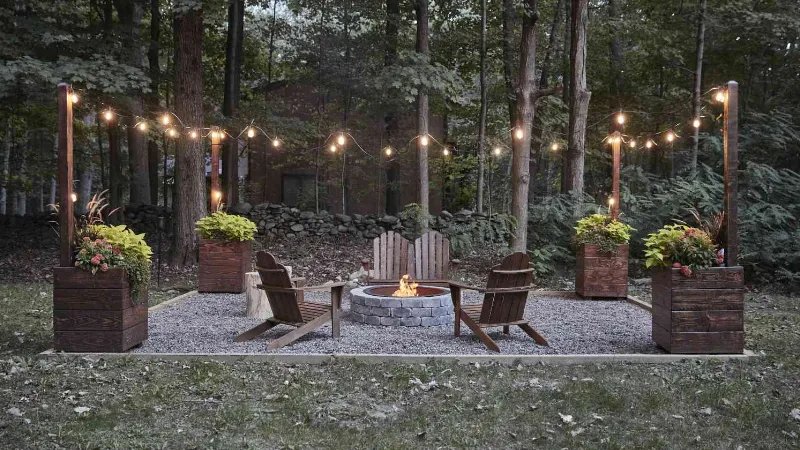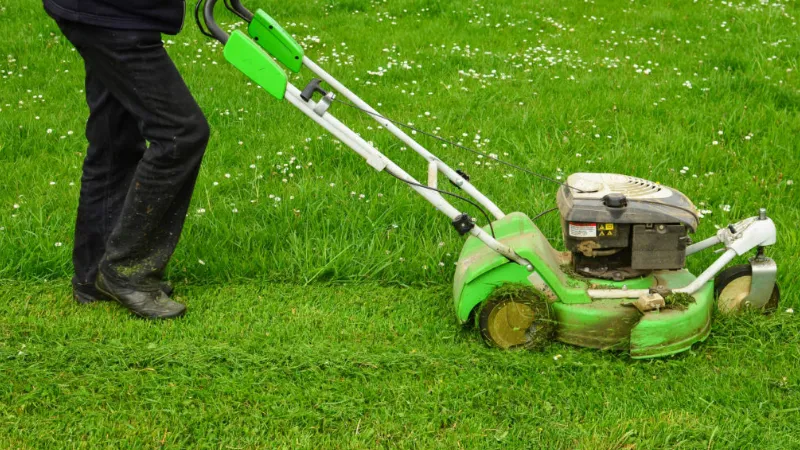Continue reading to discover more about how frequently to water your garden and tomato plants grown in containers.
Water tomato plants every morning in the early part of the growing season. The need to water tomato plants twice daily may arise as the temperature rises. Typically, garden tomatoes need 1-2 inches of water per week. To ensure the soil is ideal for growing and moist, water newly planted tomatoes thoroughly.
Read on for more detailed information.
How Often Should You Water Tomato Plants?
Depending on the maturity of the plant and the weather, you should water your tomato plants more or less frequently, depending on those factors.
When working with seedlings, the soil only needs a small amount of water to become moist but not soaked. For the seeds to germinate, this moisture content will be sufficient. The plant needs regular care because it is still young and growing, and the soil will quickly dry out. One to two times a day, if the plants are exposed to a hot climate, is the ideal amount of water to give seedlings.
You should make sure the pots have drainage holes and a suitable tray before transferring your seedlings to them. In this manner, extra water can be removed from the soil and collect below. This point is essential because if the water cannot drain, it will remain in the soil, suffocate the roots, and eventually cause root rot. Although plastic will retain water better between these two, both terra cotta and plastic plant pots work well for this. If you decide to use a hanging basket, keep in mind that it will need to be watered more frequently because the soil won’t be able to retain the water as effectively.
Watering mature tomato plants frequently and liberally is ideal. Keep track of its development and change your routine as necessary. Start by giving your tomato plants a morning watering every day. Over the course of the week, try to give them about 1-2 inches of water. Make sure to check the soil’s moisture levels in the afternoons if you live in a hot climate or have tomatoes that are grown in pots. You can do this by sticking your finger in the top inch of the soil. You might need to water up to twice a day if the soil is already bone dry. Similarly, you can reduce the amount of water you apply if the temperature drops.
However, be careful not to overwater the soil; it should be moist but not soggy to prevent root rot. Additionally, if the soil around your tomato plants is still wet from a previous watering, you shouldn’t water them. A soil meter is something you can always purchase if you’re unsure of the soil conditions. We recommend the XLUX Soil Moisture Meter ($12.99, Amazon(opens in new tab)). If you have outdoor tomato plants, keep in mind that rainwater will also count toward your weekly allotment.
Apply the water slowly and deeply around the base of the stem when watering tomato plants; this speed is necessary for better control of the quantity and application. To promote broad root growth as well, you should spread the water out in the soil. Avoid pouring water directly on the plant or its leaves as this can promote disease and waste any water that evaporates before it reaches the soil.
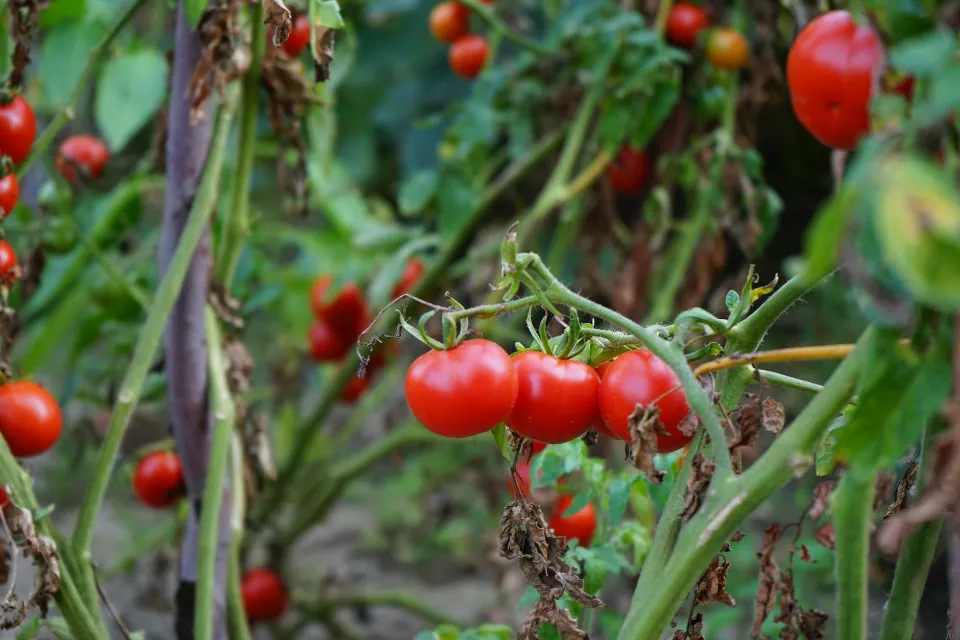
How to Reduce the Need to Water Tomato Plants?
Like the majority of gardeners, I don’t like to water my raised beds or containers several times per day. In order to aid the soil in holding onto moisture and decrease the amount of water I need to apply, I employ a number of strategies.
- Pull weeds– Pull weeds from raised beds or in-ground gardens as soon as they appear because they compete with your tomato plants for water.
- Mulch– To stop the spread of soil-borne diseases, I first started mulching my tomato plants. And while reducing the need for watering is one advantage of mulching tomatoes, there are other advantages as well. I surround my tomato seedlings with a three-inch layer of straw, chopped leaves, or organic weed-free grass clippings after planting. The tomatoes I grow in containers are also covered with a layer of mulch. You may want to know How Long Does Grass Seed Last?
- Deep planting– The ability of tomato plants to develop roots along their entire stems is amazing. Take advantage of this by encouraging a strong root system by planting the seedlings horizontally or as deeply as you can into the soil. When I bury the bottom half to two thirds of the stem when planting tomato seedlings, it works best. Strong root systems help plants withstand drought conditions better.
- Apply organic amendments– Compost and aged manures are among the organic materials that help gardens and potted plants retain moisture in the soil.
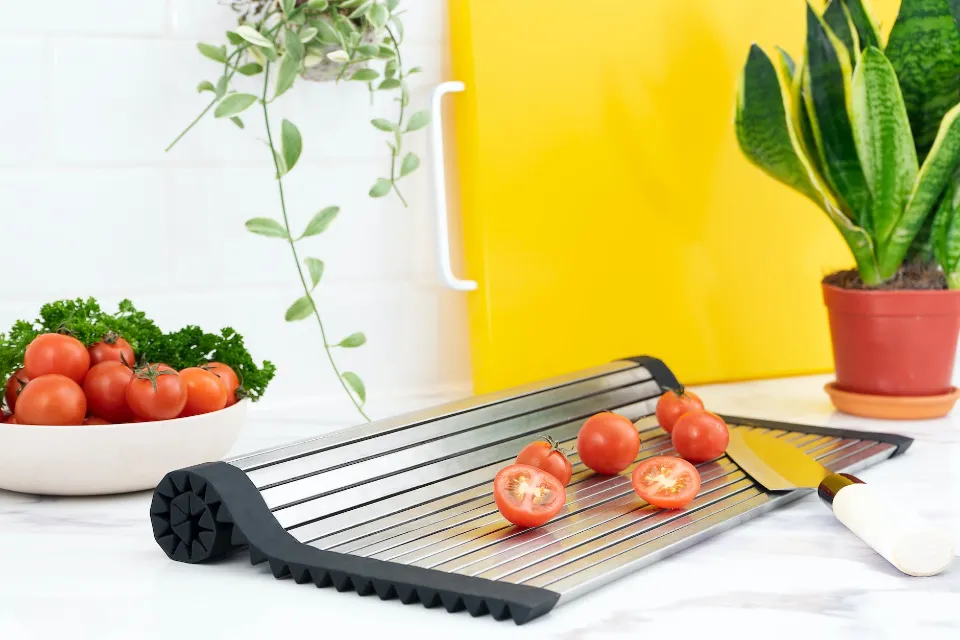
Retaining Moisture in Container-grown Tomatoes
You can support soil moisture retention for tomatoes grown in containers in a number of ways. Here are five smart ways to reduce watering:
- Plant in large containers– A large pot can hold more soil than a smaller pot or planter and retains moisture longer. Choose planting containers for tomato transplants that can hold at least five to seven gallons of soil. Even better are 10-gallon containers! I also grow tomatoes in Smart Pot Long Beds, which are conveniently divided into 16 by 16-inch sections.
- Container material– Consider the material when choosing containers for tomato plants. Planters made of terra cotta or fabric dry out faster than ones made of plastic or metal. Make sure containers have enough drainage holes, as well.
- Add compost– The moisture retention of potting mixes is increased by adding compost or other organic amendments. When the container is filled, mix the organic material into the growing medium.
- Mulch containers– Add a layer of straw mulch to the growing medium after the tomato seedling has been placed in the pot.
- Plant in self-watering containers – Self-watering containers with a reservoir of water in the bottom can be purchased or made yourself. By doing this, watering can be cut in half.

How Much to Water Tomatoes?
Here is where science comes into play. According to some university studies, the majority of tomato plants require about an inch of water per week to thrive. This volume of water can be expressed in gallons, and some growers have done so using mathematical formulas. About 1″ to 1.5″ of water is going to translate to between one-half gallon and a full gallon of water.
The tricky part comes next. That much water cannot be given out in a single day. This will result in standing water and runoff, which is bad for your plants. There should be a few weeks where raindrops can help you out a little. Again, use common sense and rely on how moist the soil around your plants is.
Your greatest teacher will be experience. Consider the steps you need to take to keep moisture in place. Make thorough notes so you can refer to them year after year in the same climate.

When Should You Water Tomato Plants?
What time of day is ideal for watering tomato plants? In order to give my plants enough time to dry before dusk if water does splash on their foliage, I try to water them in the morning. In light of this, water the ground thoroughly if you notice it is dry when you get home from work. Just make an effort to avoid wetting the foliage because wet leaves can spread diseases like early blight. Avoid letting tomato plants become so dry that they begin to wilt as this increases the chance of blossom end rot.
While watering tomato plants, you might also want to fertilize them. To provide plants with a consistent supply of nutrients, you can add a liquid organic fertilizer to the watering can. To make sure you’re mixing at the suggested rate, read the package directions carefully.
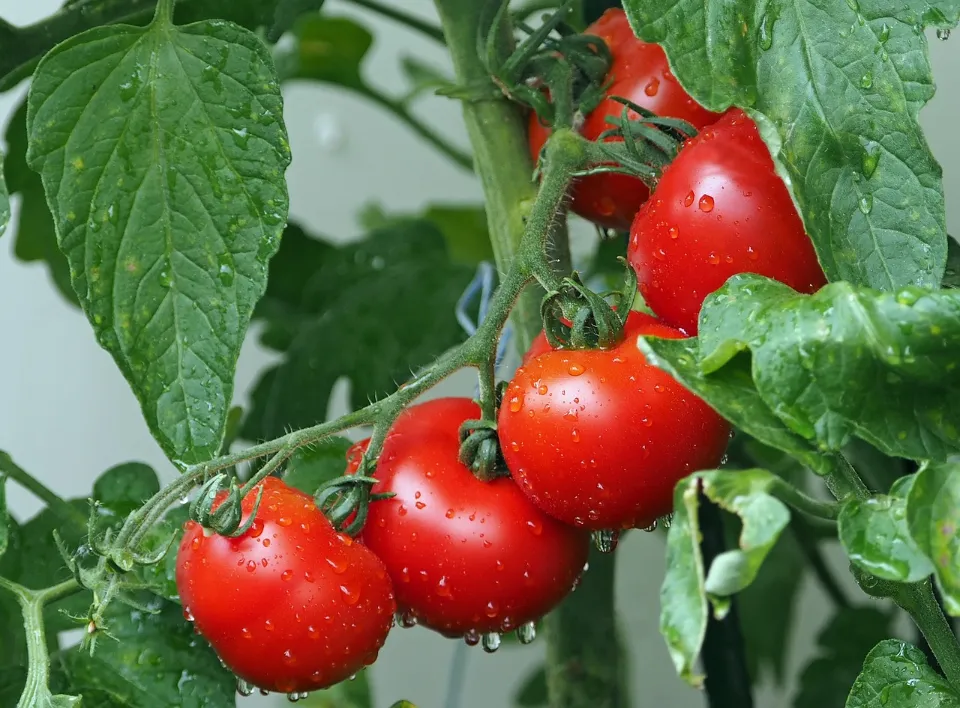
How to Water Tomato Plants?
Once you’ve answered the question of ‘how often do you water tomato plants’, it’s time to think about how to water. Water tomatoes in containers and gardens thoroughly to completely saturate the soil. Don’t just lightly mist plants with water. Deeper root development and drought resistance are encouraged by frequent, thorough watering, especially in garden beds. You can irrigate garden beds and containers in a variety of ways. Here are five of the most common ways to water:
Watering With a Sprinkler
Although using a sprinkler to water vegetables may seem simple, it is generally not a good idea. The main reason is that splashing water can spread diseases by moistening the foliage of your plants. Additionally, overhead watering is ineffective and can waste a lot of water through evaporation or runoff, especially on a hot summer day. It waters everything in its vicinity rather than directing water to the root zone of plants.
Watering Tomatoes With a Watering Can
A watering can is an affordable tool for watering a small garden. Unless you want more cardio, I don’t recommend a watering can in a big garden as it requires a lot of running back and forth to fill up the watering can. Alternatively, you could set up a rain barrel to fill a watering can. Try to avoid wetting the foliage, especially the lower leaves, by watering the soil at the base of the plant.
Watering With a Hose and Watering Wand
This is how I typically water my tomato plants. I’ve got hoses set up in both my greenhouse and garden, so all I have to do to start working is turn on the faucet. I can monitor my plants (Pests? ) by manually watering them. illnesses? other issues?) and a long handled watering wand makes it so easy to make sure I’m hydrating the ground, not the plant. To minimize water splashing and lower the risk of soil-borne diseases, tomato plants should be raised off the ground using a tomato cage.
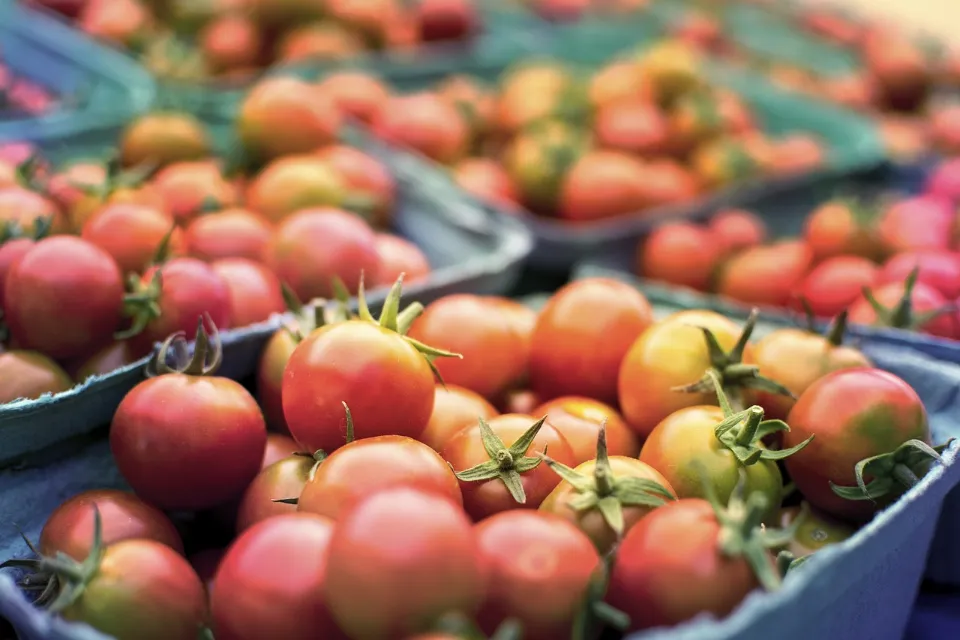
Irrigating Tomato Plants With a Soaker Hose
Using soaker hoses, it is easy to water tomatoes precisely where it is needed. In order to weep water down their entire length, soaker hoses soak the soil. Although they resemble a standard garden hose, they are made of a porous material that slowly but thoroughly waters plants. Because the water is delivered to the root zone, none is splashed on to the foliage or wasted in run off.
Using Drip Irrigation to Water Tomatoes
To water, drip irrigation uses emitters, tubes, and hoses. Like soaker hoses, drip irrigation waters the base of a plant, not the entire garden bed. It conserves water and waters gradually over a long time. An effective and simple way to water plants is by using a drip irrigation system, which requires some effort to set up but is simple to use once it is.
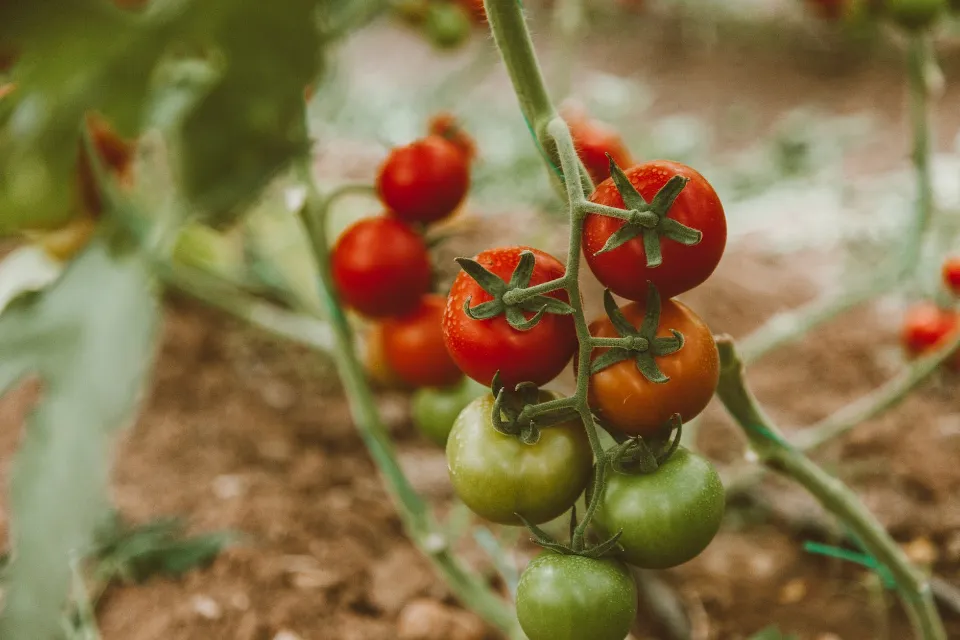
Facts About Tomato Growth You Need to Know
- They don’t grow anywhere and anytime– Not all places and seasons can support tomato cultivation. There are plenty of tomato varieties to pick from. Find out what grows best in the area by asking your neighbors or the gardening club in your community.
- Sunlight is important– Tomato plants need sunlight in order to grow well. So make sure your plants are in a sunny spot in your garden that isn’t too hot. To find out more, continue reading.
- Nutrition– If the plants are not getting the proper nutrition, no matter how well you water them, there isn’t much you can do besides finding the cause. Check your tomato plants for yellow leaves, as this is a sign of bad nutrition.
- Watering tomatoes– There is no doubt that this is a skill. But it’s not difficult to learn and is not rocket science. You might even instruct your children in growing their own crop this year. It’s a wonderful chance to bond and learn.
Please cast your vote now so I can see how frequently tomato plants are watered around the world. You could use the data to compare yourself to others, and I’m confident that you’ll come to the same conclusion that there isn’t a single, ideal way to go about doing it.
But there’s no need to worry because I’ll show you how to determine what will work the best in your area in this article. So don your thinking cap and fasten your seatbelt! The trip has started.

FAQs
Can Tomato Plants Be Overwatered?
Early signs of overwatering in tomato plants include cracked fruit and blisters or bumps on the lower leaves. The bumps or blisters on the leaves turn corky if the overwatering persists. As the roots drown, die, and rot, the amount of water reaching the plant’s green parts decreases.
What Are the Signs of over Watering Tomato Plants?
Overwatered plants may have wilted or yellowed stems and leaves, or the leaves might develop bumps and blisters or fall off entirely if plants continue to get too much water. Once the situation is severe enough, checking the roots is another way to distinguish between plants that have been overwatered and those that have been underwatered.
Do Tomatoes Need Direct Sunlight?
Tomatoes love the sunshine. In most cases, a position in full sun—defined as an average of at least eight hours per day—produces the best results, though if you live in a hot climate, dappled shade may suffice.
When Should You Stop Watering Tomatoes?
A local nursery rep told me that it would be best once the tomato is full grown, but still green, to stop watering. Evidently, this makes the fruit ripen faster.
Summary: How Often to Water Tomato Plants?
Tomatoes are one of the most well-liked plants in vegetable gardens. The secret to success is mastering tomato irrigation. These delectable treats are primarily made of water, and they require sufficient amounts of it to survive.
To ensure that the soil is moist and suitable for growing, water newly planted tomatoes thoroughly. Plants should be watered daily in the morning early in the growing season. As temperatures increase, you might need to water tomato plants twice a day. Typically, garden tomatoes need 1-2 inches of water per week.
If you have any questions, please leave a comment. My Prime Home tries to give you the best home improvement information. Thank you for reading.
Read about

